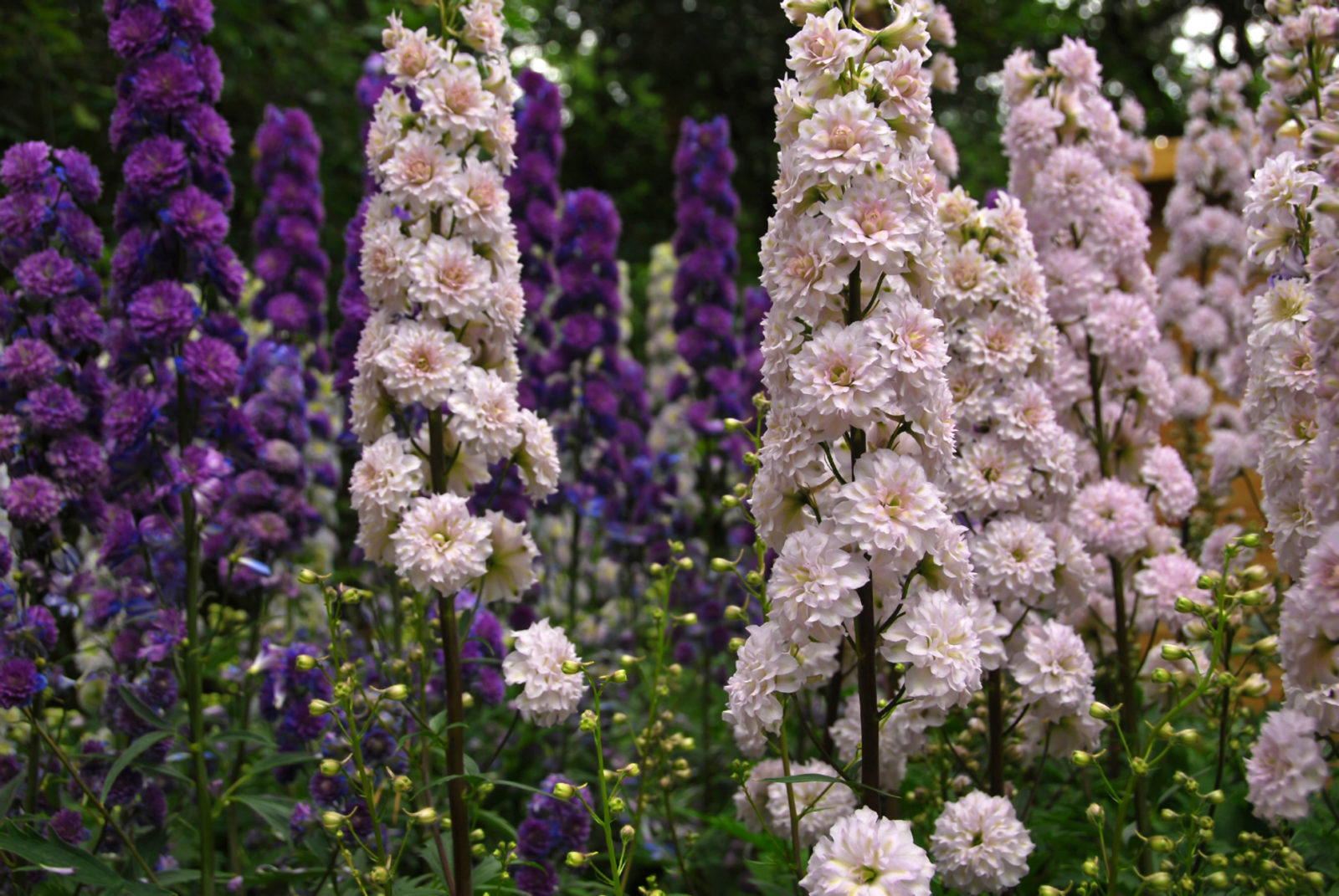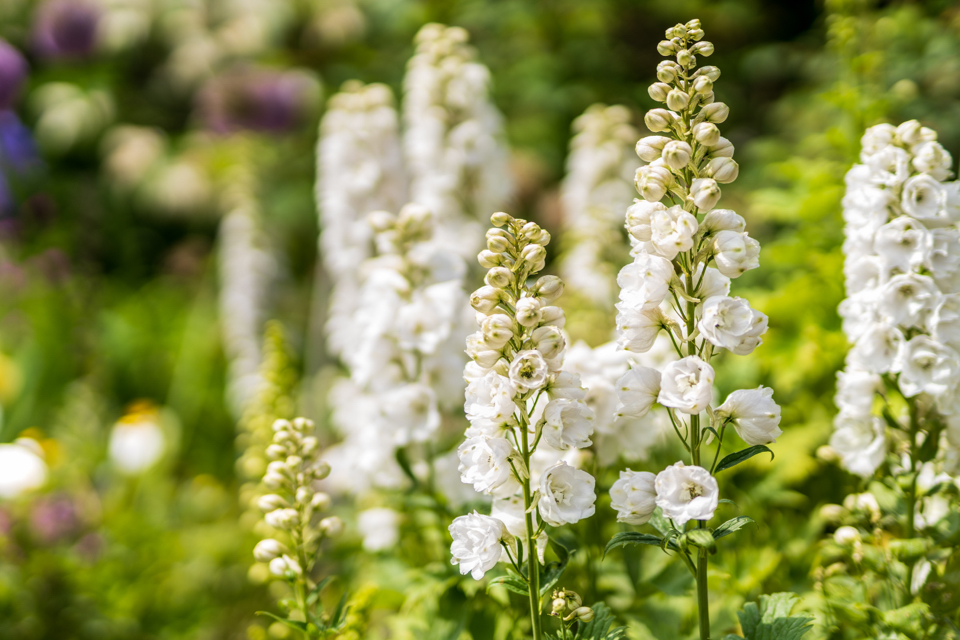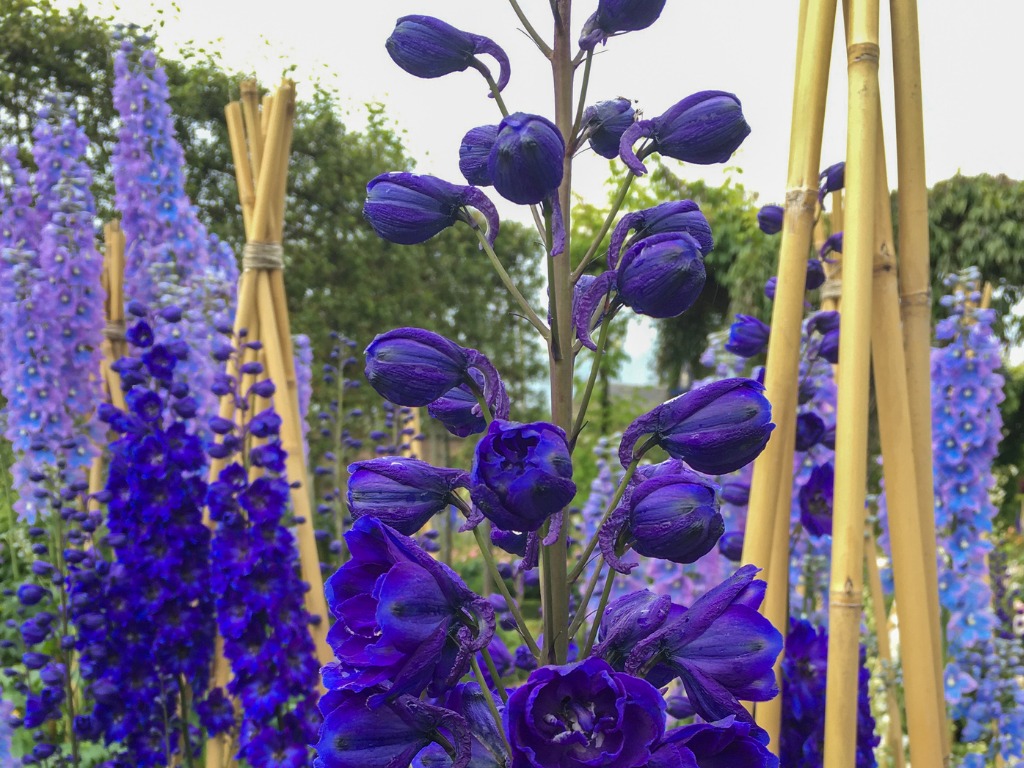Delphiniums Are Best Supported To Prevent Damage – Consider These 3 Options

PERENNIALS > DELPHINIUM > SUPPORT

Elizabeth is a Permaculture Garden Designer, Sustainability Consultant and Professional Writer, working as an advocate for positive change. She graduated from the University of St. Andrews with an MA in English and Philosophy and obtained a Diploma in Applied Permaculture Design from the Permaculture Association.
Reviewed By DAN ORI

Dan has over 27 years’ under his belt caring for plants and gardens. Working as a Horticultural Instructor and Consultant, he draws on a diverse range of experience that includes working as a Head Gardener, Tree Surgeon, Garden Centre Trouble Shooter, and writer of academic papers. Dan has a Level 3 Diploma in Horticulture and is currently a candidate for the RHS’s most prestigious award – The Master of Horticulture.
Contributions From GRAHAM AUSTIN

Graham Austin is a Delphinium expert and RHS 2022 Gold Medalist who is the owner of Home Farm Plants, a specialist plant nursery.
IN THIS GUIDE
DELPHINIUM GUIDES
Deadheading
Growing From Seed
Growing In Containers
Propagating Cuttings
Support
Varieties
Winter Care
Whether you are growing perennial delphiniums, or annual delphiniums (Larkspur), you will find that they are wonderful additions to many gardens.
However, both of these types of delphiniums do require some care, and one thing that you need to think about is support.
Delphiniums are tall plants – though some are taller than others.
The particular cultivar that you have chosen will determine exactly how fragile and likely to topple it might be.
Where exactly you have placed your plant will also determine whether it needs staking, or another form of support.

In some cases, surrounding plants or man-made features in a garden may already protect your plants to a degree, and, especially with shorter delphiniums, additional support may not always be required.
However, most delphiniums are best supported, since even in a sheltered spot their hollow stems and height make them vulnerable to damage.
The last thing you want is for a sudden summer storm or windy weather to knock over these majestic plants and disappoint you after all your work to grow and tend to them.
When To Provide Support
Delphinium supports should be added in the spring before the plants tower to their summer heights.
Take care when inserting supports not to damage the plants themselves or their root systems.
If planting out delphiniums, you may wish to consider placing supports before planting, to avoid any potential damage or disruption.
Support Options To Consider
When supporting delphiniums, it is important to remember that these are plants which like to sway a little in a gentle breeze.
Tying too tightly to too rigid a support can do more harm than good.

In a particularly sheltered spot, where delphiniums are at the back of a border with other plants in front, you may be able to get away without supporting them.
However, to avoid risk to your plants, here are some support options to consider.
1) Single Canes Or Stakes
The simplest and most straightforward way to support a few delphiniums is to use single bamboo canes, or natural branch stakes pushed into the soil nearby.
The plants can be tied in using natural twine to these supports as they grow.
Just be sure to use a stake which is tall enough for the cultivar you are growing, and if growing in containers, make sure that the pot is heavy and sturdy enough not to fall over when the support is added.
2) Cage / Ring Supports
Another option is to create or buy a cage or ring-type support, which provides some support by encircling the stem up to 1m or so in height.
Owner of delphinium nursery Home Farm Plants, Graham Austin, shares his specialist advice on staking delphiniums:
“It is important to stake them. I’d recommend using 3 canes around each plant, tying around the canes to form a cage as they grow”.

There are plenty of reclaimed materials that you might use to create a cage or ring support – from strong fencing wire to a simple design with three canes and some natural twine.
Such supports can be hidden by other plants and can be designed so as to be relatively unobtrusive.
3) Grid Supports
If you are growing a larger number of delphiniums, you might also consider placing a series of stakes or canes with a lattice of twine between them.
“In informal planting schemes, I like to use long thick forking branches pushed deep into the soil, as this gives a softer rustic feel to a border,” shares Dan Ori, a Horticultural Consultant.
Again, at 1m or so in height, this can provide support for a number of taller plants while remaining relatively unobtrusive in the overall look of the garden.
